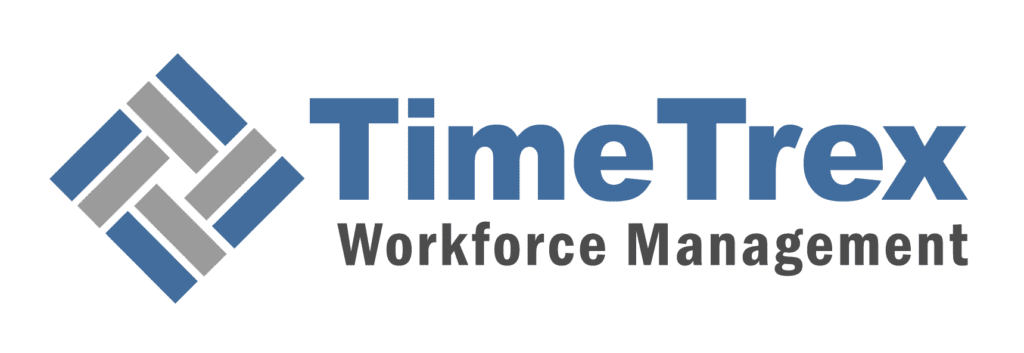
1000 Things to Know About Starting a Business in San Francisco: Part 4
Having addressed foundational planning, legal structures, registration, market understanding, funding, taxes, workforce management, insurance, and IP in previous parts, this final installment focuses on reaching customers, protecting digital assets, embracing sustainability, planning for growth, leveraging key support networks, and concluding thoughts on navigating the San Francisco business landscape.
Marketing & Sales Strategies
Effectively reaching and converting customers in the competitive San Francisco market requires a well-defined strategy.
Developing a Marketing Plan
- Target Audience & Channels: Clearly define who you're trying to reach and select the most effective channels within the Bay Area (digital, social media, events, content, partnerships).
- Branding & Messaging: Develop a strong, consistent brand identity and messaging that resonates with your audience and sets you apart. Consider agencies specializing in brand experiences if needed.
- Marketing Budget: Allocate realistically and track the Return on Investment (ROI) for different marketing activities.
- Digital Marketing Strategy: Essential for most SF businesses. Key components include:
- Search Engine Optimization (SEO): Optimize your website and content to rank higher in Google searches for relevant terms.
- Content Marketing: Create valuable content (blogs, articles, case studies, videos) to attract, engage, and establish thought leadership.
- Social Media Marketing: Engage on relevant platforms (LinkedIn for B2B, Instagram/Facebook for B2C) and consider paid ads.
- Paid Advertising (PPC): Run targeted ads on search engines (Google Ads) or social media.
- Email Marketing: Build a list and use targeted campaigns for lead nurturing and customer retention.
- B2B vs. B2C Strategies: Tailor your approach:
- B2B (Business-to-Business): Focus on relationship building, lead generation, demonstrating ROI, and targeting decision-makers. Tactics include LinkedIn, content marketing (whitepapers), email, events, and Account-Based Marketing (ABM). Specialized B2B agencies exist.
- B2C (Business-to-Consumer): Focus on brand awareness, engagement, and driving sales. Tactics include social media (Instagram, Facebook, TikTok), influencer marketing, consumer-focused SEO, email, and local ads/events.
Sales Strategies & Tactics for the Bay Area
- Understand Competition: The market is highly competitive; clearly communicate your unique value proposition and differentiate strategically.
- Relationship Building: Crucial, especially in B2B. Build trust through networking and consistent communication.
- Value-Based Selling: Focus on understanding customer needs and demonstrating how your offering solves their problems and provides tangible value.
- Leverage Technology: Use Customer Relationship Management (CRM) systems to manage leads and interactions. Employ sales automation tools where appropriate.
- Networking for Sales: Actively participate in industry events, conferences (e.g., TechCrunch Disrupt, Dreamforce), and meetups. Follow up professionally.
- Pricing Strategy: Research competitors and set pricing aligned with your value proposition and target market (premium, value-based, etc.).
- Sales Team Structure: As you grow, define roles, processes, and compensation. Consider inside vs. outside sales models.
- Metrics & Adaptation: Track key sales metrics (conversion rates, sales cycle length, customer acquisition cost) and adjust strategies based on performance.
Cybersecurity & Data Privacy
In today's digital world, protecting your business and customer data is paramount due to increasing cyber threats and strict privacy regulations.
Importance in the Digital Age
- Elevated Risk: Constant threats like ransomware, phishing, and data breaches can cause significant financial, reputational, and legal damage.
- Data as a Valuable Asset: Protecting sensitive customer and employee data is crucial for trust and legal compliance.
Key Cybersecurity Best Practices
- Strong Authentication: Implement Multi-Factor Authentication (MFA) widely, especially for sensitive access. Avoid default passwords. MFA is often required for cyber insurance.
- Endpoint Security: Use and update robust anti-virus/malware software; consider Endpoint Detection and Response (EDR) solutions.
- Data Backup & Recovery: Implement regular, automated, tested backups. Store securely (offline/separate cloud) against ransomware.
- Network Security: Use firewalls, secure Wi-Fi (strong passwords, encryption), consider network segmentation.
- Employee Training: Conduct regular awareness training on phishing, password security, safe browsing, and data handling.
- Incident Response Plan: Develop, document, and test a plan for handling security breaches (containment, recovery, communication).
- Vendor Risk Management: Assess security practices of third-party vendors handling your data or accessing systems. Address supply chain risks.
- Regular Assessments & Updates: Conduct vulnerability scans and risk assessments. Keep all software patched and updated.
Compliance Frameworks & Regulations
- NIST Cybersecurity Framework (CSF): A widely adopted voluntary framework (Govern, Identify, Protect, Detect, Respond, Recover) to structure security programs.
- California Consumer Privacy Act (CCPA) / California Privacy Rights Act (CPRA): Grants significant privacy rights to California residents. Applies to businesses meeting certain thresholds. Key requirements include providing notice, honoring consumer rights (know, delete, correct, opt-out, limit sensitive PI use), implementing reasonable security, and avoiding discrimination. Significant fines and private right of action for breaches apply.
- Payment Card Industry Data Security Standard (PCI DSS): Mandatory for businesses handling credit card data. Requires specific technical/operational controls.
- Industry-Specific Regulations: Sectors like healthcare (HIPAA) or finance (GLBA) face additional stringent rules.
Sustainability & Social Responsibility
Integrating sustainable and socially responsible practices can enhance brand reputation, attract talent, and potentially lead to cost savings.
Green Business Practices
- SF Green Business Program: A certification program administered by SF Environment recognizing businesses meeting high environmental standards (energy/water conservation, waste reduction, pollution prevention). Part of the California Green Business Network.
- Benefits: Public recognition, marketing advantages, potential efficiencies/cost savings, improved morale. Certified businesses may get additional rebates.
- Other City Programs: Explore programs like EnergyAccess SF (assessments/rebates), reusable foodware support, commercial washer rebates. Resources like StopWaste.org (Alameda County) offer relevant principles.
- Integration: Adopt practices like reducing energy/water use, minimizing waste (recycle/compost), sourcing sustainably, reducing carbon footprint.
Corporate Social Responsibility (CSR)
- Community Engagement: Participate in local initiatives, support non-profits, encourage employee volunteering to enhance reputation and ties. SF's Community Challenge Grants offer one funding avenue.
- Ethical Practices: Adhere to ethical labor standards, promote diversity/inclusion, ensure supply chain responsibility, and maintain transparency for long-term sustainability and positive stakeholder relations.
Sources
- Bay Area Real Estate Market 2025 - Housing Trends & Predictions for Buyers and Sellershttps://faberrealestateteam.com/blog/bay-area-real-estate-understanding-new-listing-trends-and-what-it-means-for-you
- Selling a House During Bay Area Peak Season: Timing Tips for Success - OWN Real Estatehttps://www.theownteam.com/blog/selling-a-house-during-bay-area-peak-season-timing-tips-for-success/
- Top 10 Strategies for Networking Your Way into San Francisco's Tech Scenehttps://www.nucamp.co/blog/coding-bootcamp-san-francisco-ca-top-10-strategies-for-networking-your-way-into-san-franciscos-tech-scene
- Networking Event Tips and Tricks: Do's and Don'tshttps://piedmontave.com/networking-tips-and-tricks/
- San Francisco Chamber of Commerce: Homehttps://sfchamber.com/
- Find a grant for your small business - SF.govhttps://www.sf.gov/information--find-grant-your-small-business
- Green your business - SF.govhttps://www.sf.gov/information--green-your-business
- Cyber Insurance Trends – Navigating Coverage... 2025 Privacy Breach Insights – Part 5 | McCarthy Tétraulthttps://www.mccarthy.ca/en/insights/articles/cyber-insurance-trends-navigating-coverage-evolving-risk-landscape-2025-privacy-breach-insights-part-5
- Cyber Insurance: Risks and Trends 2025 | Munich Rehttps://www.munichre.com/en/insights/cyber/cyber-insurance-risks-and-trends-2025.html
- Cyber Insurance Trends and Statistics to Know in 2025 - JumpCloudhttps://jumpcloud.com/blog/cyber-insurance-trends-statistics
- An Honest Review of Digital Marketing Services in Silicon Valley - SocialSellinatorhttps://www.socialsellinator.com/social-selling-blog/digital-marketing-services-in-silicon-valley
- Best B2B Marketing Agencies in San Franciscohttps://digitalagencynetwork.com/agencies/san-francisco/b2b-marketing/
- Cybersecurity Compliance and Regulatory Frameworks: A Comprehensive Guide for Companies - Deepak Guptahttps://guptadeepak.com/cybersecurity-compliance-and-regulatory-frameworks-a-comprehensive-guide-for-companies/
- CCPA Updates, Cyber, Risk, ADMT, and Insurance Regulations Written Comments Part 3https://cppa.ca.gov/regulations/pdf/part3_all_comments_combined_redacted_oral_not_included.pdf
- CCPA Compliance Best Practices - AuditBoardhttps://www.auditboard.com/blog/ccpa/
- Green Business Certification | StopWaste - Home, Work, Schoolhttps://www.stopwaste.org/at-work/business-assistance/green-business-certification
- Startup Success Stories: Inspiring Case Studies of Disruptive Innovators - Hakiahttps://hakia.com/startup-success-stories-case-studies-of-disruptive-companies/
- Venture Capital | Shai's Bloghttps://shaigoldman.com/category/venture-capital/
- Cyber Insurance: Risks and Trends 2025 | Munich Rehttps://www.munichre.com/en/insights/cyber/cyber-insurance-risks-and-trends-2025.html
Disclaimer: The content provided on this webpage is for informational purposes only and is not intended to be a substitute for professional advice. While we strive to ensure the accuracy and timeliness of the information presented here, the details may change over time or vary in different jurisdictions. Therefore, we do not guarantee the completeness, reliability, or absolute accuracy of this information. The information on this page should not be used as a basis for making legal, financial, or any other key decisions. We strongly advise consulting with a qualified professional or expert in the relevant field for specific advice, guidance, or services. By using this webpage, you acknowledge that the information is offered “as is” and that we are not liable for any errors, omissions, or inaccuracies in the content, nor for any actions taken based on the information provided. We shall not be held liable for any direct, indirect, incidental, consequential, or punitive damages arising out of your access to, use of, or reliance on any content on this page.
About The Author

Roger Wood
With a Baccalaureate of Science and advanced studies in business, Roger has successfully managed businesses across five continents. His extensive global experience and strategic insights contribute significantly to the success of TimeTrex. His expertise and dedication ensure we deliver top-notch solutions to our clients around the world.
Time To Clock-In
Start your 30-day free trial!
Experience the Ultimate Workforce Solution and Revolutionize Your Business Today
- Eliminate Errors
- Simple & Easy To Use
- Real-time Reporting

Saving businesses time and money through better workforce management since 2003.
Copyright © 2025 TimeTrex. All Rights Reserved.
